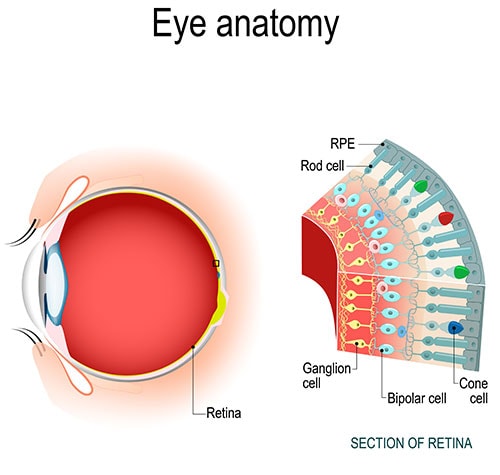All Categories
Featured
When it pertains to sun safety and security, lots of people focus on securing their skin from unsafe UV rays. Nonetheless, the impacts of UV radiation on your eyes are equally vital but frequently neglected. Prolonged direct exposure to ultraviolet (UV) rays can result in different eye problems, some of which may cause permanent damage or vision loss. Whether you're outdoors on a warm coastline or taking a walk on an overcast day, comprehending just how UV rays affect your eyes and discovering how to protect them is crucial for preserving healthy vision.
What Are UV Rays and Exactly How Do They Effect the Eyes? UV rays are a kind of undetectable radiation discharged by the sun. There are 3 types of UV rays:
UVA Rays: These penetrate deeply right into the skin and eyes, adding to long-lasting damages. UVB Rays: These are much more intense and can trigger surface-level harm, such as sunburn or corneal damages. UVC Rays: These are the most unsafe however are absorbed by the Planet's environment and rarely pose a direct hazard. Both UVA and UVB rays can harm different parts of the eye, including the cornea, lens, and retina.
Short-Term Results of UV Direct Exposure. Also a short period of intense UV exposure can damage your eyes. A common problem resulting from this is photokeratitis, frequently described as "sunburn of the eye." Symptoms consist of:
Agonizing or red eyes. Sensitivity to light. Too much tearing. Short-term blurred vision. Photokeratitis is generally temporary yet functions as a suggestion of the instant risks of UV radiation.
Long-Term Results of UV Exposure. Collective UV exposure over time can bring about numerous severe eye problems, including:

Cataracts: UV rays accelerate the development of cataracts, a condition where the lens of the eye comes to be cloudy, resulting in vision impairment. Cataracts are a leading reason for blindness worldwide.
Macular Degeneration: The macula, a part of the retina in charge of main vision, can be harmed by prolonged UV exposure, raising the danger of age-related macular degeneration (AMD)
Pterygium: Frequently called "surfer's eye," this condition entails a growth of cells on the white component of the eye, which can expand over the cornea and harm vision.
Pinguecula: UV exposure can create yellow-colored areas to create on the conjunctiva, resulting in irritation and pain.
Skin Cancer Cells Around the Eyes: The delicate skin surrounding the eyes is extremely at risk to UV radiation, raising the danger of basal and squamous cell carcinoma.
Securing Your Eyes from UV Damages. The excellent information is that shielding your eyes from UV radiation is basic and effective. Right here are some important ideas:
Put On UV-Blocking Sunglasses. Select sunglasses that block 100% of UVA and UVB rays. Look for labels suggesting "UV 400" defense. Wrap-around designs offer added insurance coverage, stopping UV rays from entering from the sides.
Make Use Of a Wide-Brimmed Hat. A hat with a large border can block almost 50% of UV rays, supplying added defense for your eyes and the fragile skin around them.
Stay Clear Of Height Sunlight Hours. UV rays are strongest in between 10 a.m. and 4 p.m. Decrease your outdoor exposure during these hours, or ensure you're effectively protected if you require to be outdoors.
Protect Your Eyes Year-Round. UV rays exist year-round, even on gloomy or snowy days. Snow, sand, and water can mirror UV rays, heightening their results. Make sunglasses a component of your everyday regimen, no matter the season.
Think About UV-Blocking Contact Lenses. Lots of call lenses currently supply UV protection, which can be an added secure when coupled with sunglasses.
Motivate Eye Security for Children. Children's eyes are more prone to UV damages since their lenses are more clear, allowing more UV light to reach the retina. Ensure they use sunglasses and hats when playing outdoors.
Arrange Normal Eye Tests. Normal check outs to an eye treatment professional are essential for checking your eye health. An eye doctor can find very early signs of UV-related damages and suggest services, such as prescription sunglasses or UV-blocking glasses customized to your demands.
Conclusion. UV rays may be unnoticeable, but their influence on your eye wellness is extremely genuine. From short-lived discomfort to long-term conditions like cataracts and macular degeneration, the threats of UV direct exposure are as well substantial to ignore. By putting on UV-blocking sunglasses, restricting your exposure during optimal hours, and scheduling routine eye tests, you can safeguard your vision and delight in the outdoors safely. Keep in mind, your eyes are just one of your most beneficial possessions-- take the required actions to protect them from dangerous UV rays today.
Latest Posts
Expert Automatic Gate Installation - Idaho’s Leading Fence Experts.
Idaho Fence - Custom Ornamental Iron Fencing for Your Property.
Host Your Extraordinary Wedding Celebration at Canyon Crest
More
Latest Posts
Expert Automatic Gate Installation - Idaho’s Leading Fence Experts.
Idaho Fence - Custom Ornamental Iron Fencing for Your Property.
Host Your Extraordinary Wedding Celebration at Canyon Crest